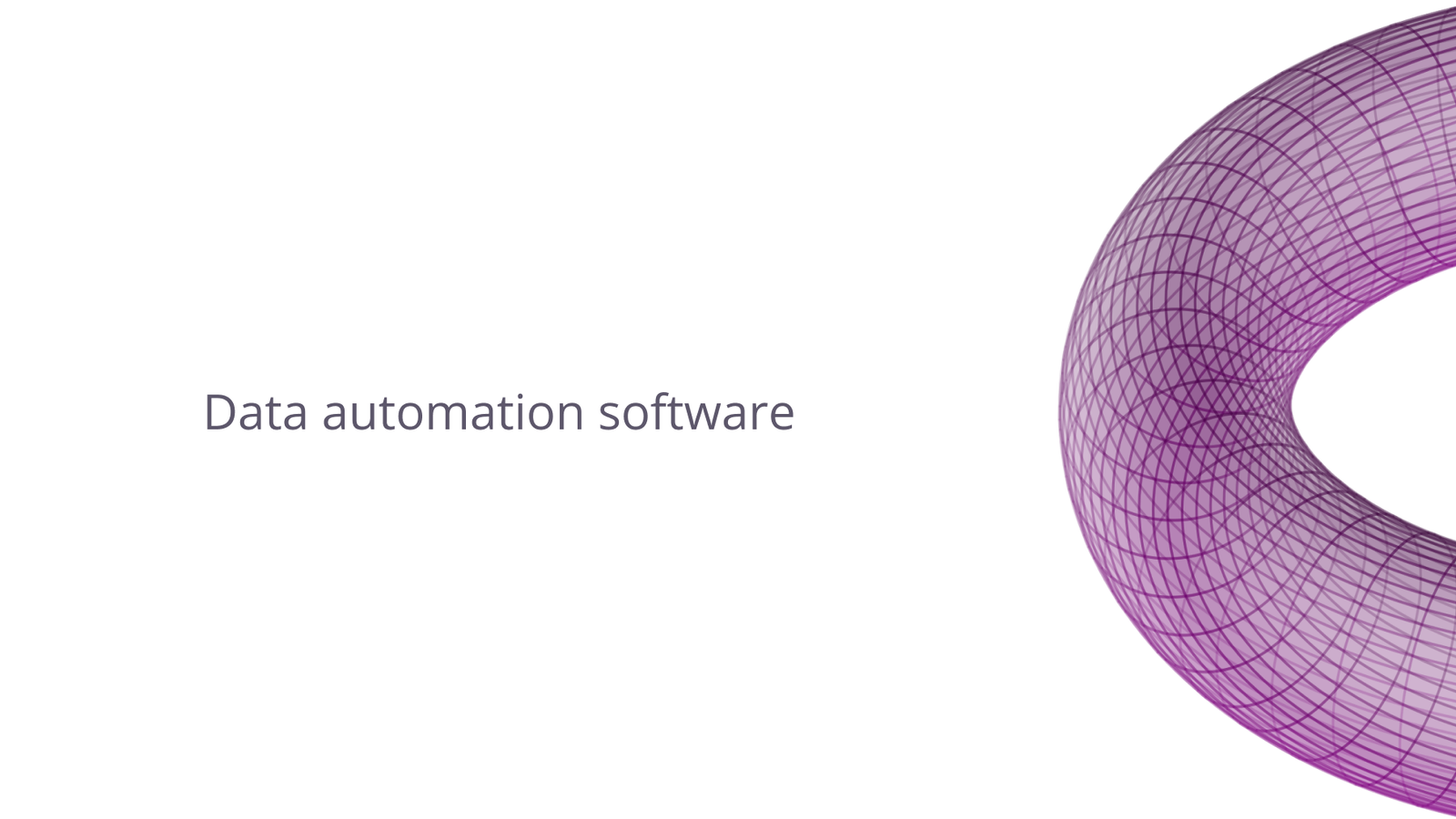Tyler Von Harz, Community Partner
Jan 7, 2025

Just about every business faces the challenge of an ever-growing flood of data. The sheer volume of data makes relying on manual processes time consuming and prone to error. And a team that's bogged down in repetitive tasks isn’t able to focus on strategic goals and driving future growth.
The solution? Data automation software. Automating the collection, integration, and analysis of data goes a long way in eliminating bottlenecks and giving your team the power to make quicker decisions. Before we jump into the best data automation software platforms, we’re going to explore the benefits of data automation and show you what key features to look out for to meet your goals.
Understanding data automation
Data automation, in other words, using technology to streamline your tasks involving data collection, processing, and management, is the key to reducing the need for human intervention.
AI and machine learning tech is at the core of data automation. Automating data analysis using artificial intelligence means you can recognize patterns in data and make predictive analyses. While robotic process automation excels at mimicking human actions for repetitive tasks like transferring data between systems, machine learning enhances these capabilities by enabling systems to improve performance over time with explicit programming.
Why bother automating these processes? Recent reports show that 66% of businesses have automated at least one business process. Another shows that automation is expected to offload up to 69% of tasks by 2025. But aside from hopping on the bandwagon, what are the real benefits from automating your data processes?
Benefits of data automation
Increased efficiency is a big one. Automation takes over tedious, time consuming tasks, such as data entry and reconciliation. In fact, two-thirds of knowledge workers indicate that automation has reduced their stress levels and made them more productive, allowing for a focus on higher-level responsibilities. This also translates into improved accuracy. Human errors, especially in repetitive processes, can lead to costly mistakes. Automation in data analysis makes sure that the data is consistent and error-free by eliminating manual inputs.
Scalability also benefits as a result. As your business grows, the volume and complexity of data increases exponentially. The best big data automation software is able to handle this growth much easier than adding more employees to your team.
Then there’s the cost reduction factor. Adding more workers to handle additional tasks is a surefire way to blow through your budget. Adding tasks to your existing employees’ plates is also a stepping stone to reduced productivity and output. Instead, data automation can minimize the labor costs associated with manual data handling, all while reducing the potential for errors and other setbacks.
Applications of data automation
Businesses across industries are using data automation to drive efficiency and improve their decision-making capabilities. But right now it sounds like just a buzzword. What exactly does data automation look like?
In marketing analytics, automation can change how campaigns are planned and optimized. Marketers can use data automation to quickly spot trends and adjust their strategies. An e-commerce business, for instance, can use automated customer segmentation to target high-value audiences with tailored offers and drive higher conversion rates as a result.
Workflow and operations optimization is another area where automation proves invaluable. Manufacturers for example, can use these tools to automate inventory tracking and ensure accurate stock levels without manual checks. Similarly, healthcare providers can streamline their patient scheduling and billing processes to free up staff for patient care.
Data integration and transformation can enjoy simplified processes too. A financial institution might use data automation tools to aggregate data from disparate sources to allow for real-time updates across their dashboards. Having this kind of integration can be a huge win for improving forecasting and compliance reporting.
Key features to consider when choosing data automation software
Choosing the right data automation software calls for careful consideration of what aligns with your business goals. Your ideal tool should both address current needs and be able to adapt to future challenges.
Key features to look for:
- Integration capabilities
- AI-powered automation
- User-friendliness
- Real-time processing
- Scalability, security, and compliance
Integration capabilities are one of the top concerns for most businesses. Since many companies rely on a mix of legacy and modern systems, having seamless data flow between them is vital for operational efficiency. For example, a retailer might integrate inventory management software with sales platforms to ensure stock levels update in real-time. No matter the use case, eliminating data silos by having integrations frees you from having to do time-consuming manual updates.
AI-powered automation can be a big help there, too. According to the McKinsey's 2024 AI report, roughly 65% of businesses are leveraging AI — and for good reason. By analyzing data patterns, AI can automate your decision-making processes, such as identifying fraudulent transactions or optimizing supply chain logistics. When searching for your perfect data automation solution, make sure you’re able to take advantage of the latest AI tech to accelerate your work.
Another aspect to consider when choosing your automation platform is user-friendliness. Complex software with steep learning curves can slow adoption and negate the benefits of automation. You want to look for a solution that lets you tailor your workflows with advanced technical expertise.
Scalability and security should be non-negotiables, so your data automation capabilities can grow with your business. A secure and scalable solution that can keep pace without degrading performance is vital. Compliance is also essential for businesses that operate in the finance or health sectors. Look for automation tools for data analysis that boast compliance with standards like SOC 2 and HIPAA to make sure your business stays on the right side of the law.
Top data automation software tools
Now you know what to look out for when picking the right data automation software. But with so many options on the market, it can still be tough to narrow down your choices. Many platforms target enterprises and have steep learning curves, whereas other solutions might be cheap but lack some critical features. We put together a list of some of the leading options available for different needs.
Quadratic
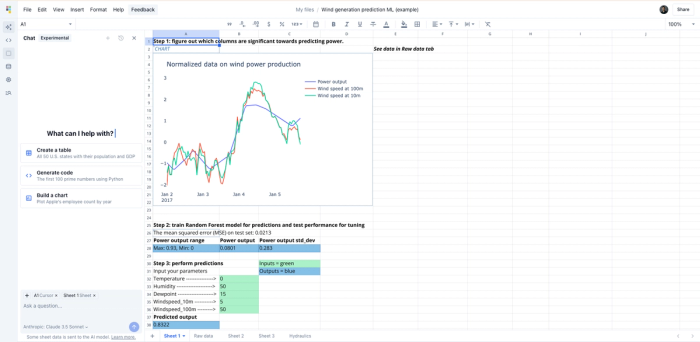
Quadratic is a web-based spreadsheet application designed for both technical and non-tech savvy users, with simple integration of programming languages like Python, SQL, and Javascript directly into a familiar spreadsheet interface. Having these integrations allows it to offer more than your typical spreadsheet app: you can import data from various sources, like databases, SaaS platforms, and even APIs.
The first thing you’ll notice with Quadratic is the simplicity of the interface. Pinch and zoom, and drag and drop capabilities make it straightforward to perform precise operations without needing to wrestle with clunky navigation systems. Having AI chat directly integrated also goes a long way in making it easier to use, so you can write code, create charts, and insert data with simple language.
One of Quadratic's biggest strengths is its ability to easily handle large datasets, with the help of modern web app architecture tools like Rust, WASM, and WebGL for improved performance. The platform is ideal for small organizations, but since it offers self-hosting options and SOC 2 and HIPAA compliance, it's also perfect for companies with heavier security or infrastructure requirements.
Microsoft Excel
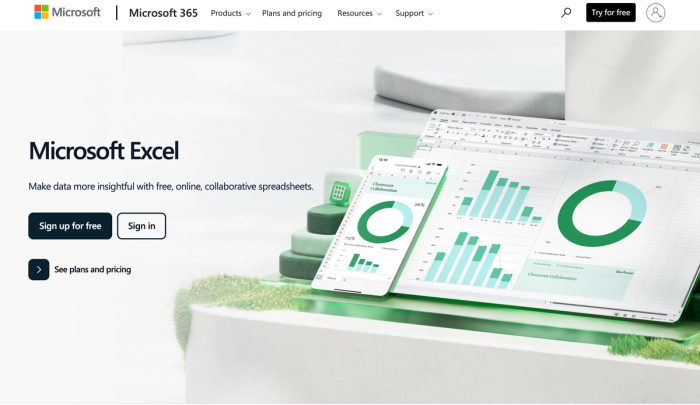
Excel is one of the most widely used spreadsheet applications. Like Quadratic, it also offers a user-friendly interface and extensive formula library that makes it accessible for both basic and complex data tasks. Excel supports data visualization features, and includes tools like Power Query to help you import, transform, and automate your data workflows.
Despite its versatility, Excel has limitations, particularly when handling very large datasets. Due to performance issues like slow processing and sluggish navigation, it isn’t as good as dedicated analysis tools if you’re dealing with thousands of rows and columns.
Alteryx
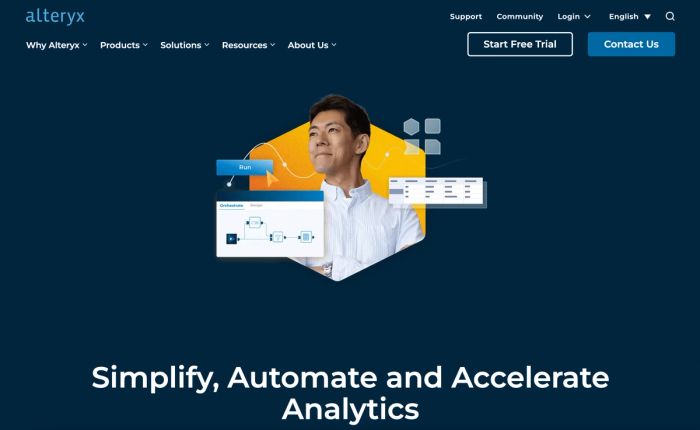
Alteryx is a data analytics platform that lets you prepare, blend, and analyze data through its intuitive drag-and-drop interface. It supports loads of data sources and offers more advanced automated data analysis tools, like predictive modeling and spatial analysis. Plus, its automation features let you create repeatable workflows to streamline processes without needing to code.
A big advantage of Alteryx is its ability to handle complex data transformations and analytics within one platform, so you don’t need to rely on a bunch of different tools. The primary drawback, however, is that it can be more resource-intensive, not to mention less budget-friendly, than other options. Still, it offers scalability and security sufficient for large organizations.
Fivetran
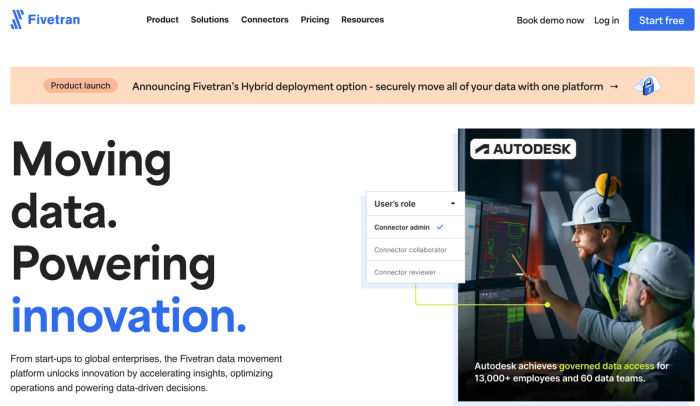
Fivetran is an automated data entry software and integration platform that focuses on ETL from various sources into data warehouses. Designed for use in larger enterprises, it offers robust security and compliance with SOC, HIPAA, and GDPR standards.
One of its greater strengths is that it comes with a wide array of prebuilt connectors, so you can focus more on the actual analysis of your data rather than pipeline management. Coming in at a higher price point is one of its more notable drawbacks, so it typically won’t be ideal for startups or small businesses.
Mammoth
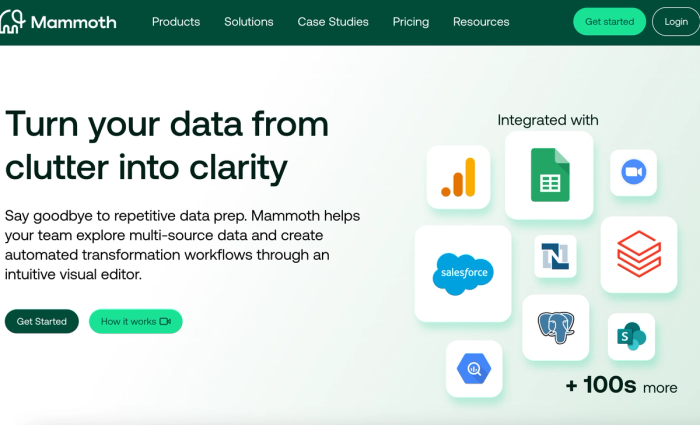
This is another pick for a data automation tool designed to streamline your ETL processes. It offers integrations with different data sources and destinations. It also focuses on helping you set up data pipelines without needing extensive tech expertise. One of its key strengths is affordability. However, as a less established player in the market, it lacks some of the more advanced features and extensive integrations offered by more mature platforms.
Zapier
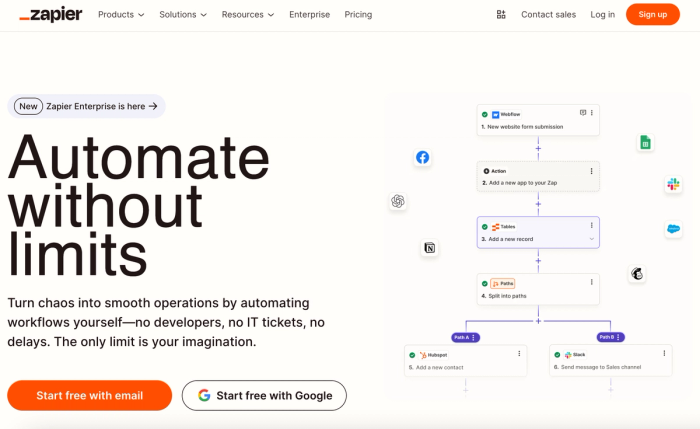
Zapier is an honorable mention, even though it isn’t specifically a data automation tool. Instead, it is a good solution for connecting various apps and services. You can build automated workflows by linking events. For example, you can configure Zapier to automatically perform a specific action in one app, such as Dropbox or Drive, if you get an email in Gmail.
While it can handle basic data movement tasks, Zapier isn’t designed for complex data transformation, integration, or analytics. For that kind of work, you would be better off sticking to a dedicated data automation platform. Even so, it can be a good option to have in your toolbox.
Conclusion
Data automation software has the potential to seriously upgrade how your business leverages its data. Focusing on the right features like integration, scalability, and AI-powered automation puts you in a much better position to reduce errors in your workflows and make smarter decisions overall.
The right tool can make a world of difference in optimizing your marketing efforts, managing your financial data, or improving your operational efficiency.
